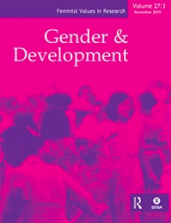COVID-19 and gender-based violence (GBV): hard-to-reach women and girls, services, and programmes in Kenya

Overview
Pandemics and government-imposed restrictions to control them, such as quarantines and school closures, exacerbate gender-based inequalities and increases exposure of women and girls to genderbased violence (GBV). The impacts of these adverse outcomes are further heightened due to diminished access to comprehensive GBV services, as governments redirect resources towards the emergency and deprioritise services such as GBV. Early reports suggest that the COVID-19 pandemic is no different, with GBV surging as governments imposed restrictive policies. In response, we conducted a rapid study in Kenya and interviewed 37 GBV and sexual and reproductive health (SRH) stakeholders from different sectors and types of organisations to understand how COVID-19 containment polices were impacting harderto-reach women and girls, as well as availability and access to services and programmes. As the Government of Kenya imposed restrictive policies to contain the spread of COVID-19, comprehensive GBV services were not deemed essential in the beginning. The government turned its attention to GBV only after reports of rising GBV in the early months of the pandemic led to advocacy by GBV stakeholders. Even then, the government’s response was ad hoc, and lacking sectorspecific guidelines to ensure availability of comprehensive GBV services and programmes. Ultimately, this led to confusion and large-scale disruption in the availability of GBV services and programmes on the ground. Kenyan women and girls will pay the price of this negligence, and some may never fully recover from experienced adverse outcomes.
Keywords
Additional details
How to cite this resource
Citation styles vary so we recommend you check what is appropriate for your context. You may choose to cite Oxfam resources as follows:
Author(s)/Editor(s). (Year of publication). Title and sub-title. Place of publication: name of publisher. DOI (where available). URL
Our FAQs page has some examples of this approach.
Oxfam in Gender Emergencies Standards 2022-25

Oxfam Gender in Emergencies Strategy 2022-25


